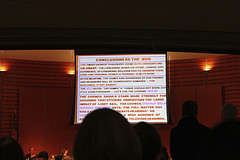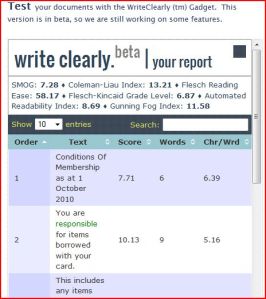If you have previously stopped by you will know that I’m a fairly recent recruit to a public library management team, and you will also know that I’m an avid fan of collaboration in any context. The two have recently intersected and I’ve been working with a colleague to draw cross-functional teams together to work on some projects of interest. The desired outcomes were improved customer service through consistency and clarity across library departments, and improved communication between staff in different departments.
Let me describe one of the projects.
Let’s imagine that a number of years ago, when Esmerelda reigned supreme over the children’s library, she was possessed of a fascination with storytelling. Thus began the development of a truly wondrous collection of picture books that might be used to enthrall the young at heart. At this point Esmerelda mandated that mere members might not borrow from this collection, as she would be mortified to face a small group of listeners who had already heard her stories, and were now possessed of an infectious fit of the yawns…
Of course, one day Esmerelda departed for pastures wild and new, and her successor went on adding books to this fabulous collection. Meredith, however, wasn’t able to avail herself of Esmerelda’s wisdom, and could only use her own judgment in adding to the ever-growing store. And because she was a librarian, she disagreed with many of her predecessor’s selections, and made lots of executive decisions about what did and did not now belong in the collection.
Now you can imagine, over the years, many different Esmereldas and Merediths came and went, and there may even have been a Mortimer or two (though it seems unlikely, given the demographic of this particular group!) Each had their own wisdom to bring, and mark to make.
Now, let’s shift our attention upstairs for a moment, and examine a small vignette. Veronica has just been handed a picture book whose location is to change. Again. For possibly the fourth or fifth time. Veronica is a cataloguer of some experience, and long enough in the tooth to remember at least three of the previous changes. Please insert your own dialogue at this point – and feel free to take a moment to be precise.
Feel better now?
You will be beginning to appreciate the issues at play. A project team was brought together to deal with the poor communication and lack of firm and relevant criteria. The team consisted of a group of people who did not normally work together day-to-day, most of whom hadn’t previously been given the opportunity to develop criteria for selection and placement within the wider collection. The group comprised:
- Cataloguers
- Collection development specialists from Children’s
- Managers and middle managers
- Customer service specialists
- Skilled storytellers
- (Of course some of these roles were shared and combined)
Initially, we redefined the purpose of the collection – to support storytelling within and outside the library (and, yes, it is now available to members). We worked together to negotiate the depth and breadth of the collection, the intended audience, and agreed that the over-riding criteria was that each book must read aloud well – acknowledging that each of us would bring our own perspective to that criteria!
We moved on to other small pockets of the collection that, over the years, had been drafted out and placed in isolation for a variety of reasons – mostly, we found, for our benefit, not our members. Most were disbanded and are being re-integrated into the main collection.
Finally, over the following weeks, we examined some of the specific genres within the collection (such as sophisticated picture books). We pulled out specific works selected to spark healthy debate on intent, placement, intended audience and so forth. The debate was intense, but did allow us to develop robust criteria and genre descriptions that allow staff to be more clear in their selections, and cataloguers to support discovery with relevant data and consistent allocation to collections.
The work is ongoing, and the outcomes so far have been outstanding.
- Clear documentation now provides criteria for all parties – and it is agreed that these are living documents, open to negotiation and amendment
- Staff making selections have a clearer understanding of the impact of seemingly small decisions on the workloads of others
- Most importantly, choices made were customer-centric. Each decision was examined through the lens “Who are we doing this for?”
- And staff got a real kick out of working this way.
Still to be done? Much! This is a new way of working, but we have established that cross-functional teamwork really helps communication, ensures that clear and shared understanding exists, and provides opportunities for getting a little more than a sniff of what others do – and that’s got to be good for career paths and succession planning.
As a management team, we used this voyage of discovery, in combination with what we were reading and discussing at the time, to firm up some new objectives and intended ways of working. We’re now talking about service delivery chains (which implies cross-functional teams), measurable customer service outcomes, and much more.
In reflecting on cross-functional teams and their place in a modern library (or workplace of any kind), I am pondering the difference, if any, between this example and the term ‘interdisciplinary’. What, if any, are the points of difference? How might one draw comparisons or define the contrasts? I’d love to hear your thoughts – and please share examples of the ways that you are fostering the recombinant DNA of the teams in your workplace.



